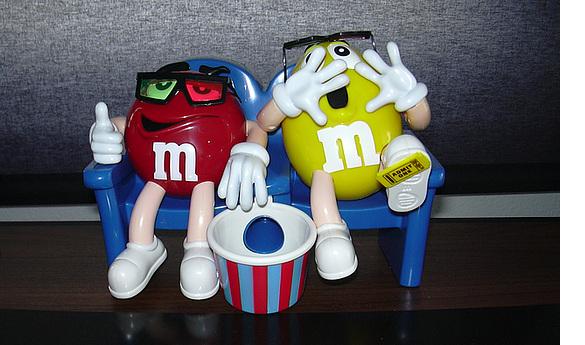Review: Are 3D movies really worth it?
The term “3D” was both exciting and foreign quite a number of years ago. The first 3D movie I think I ever saw in theaters was “Spy Kids 3D: Game Over,” which came out nearly ten years ago, back when one side of the 3D glasses was red and the other was blue.
This was at a time when 3D technology was at its infancy. Back then, 3D technology had yet to be perfected and those glasses weren’t the popular fixtures in movie theaters all over the country that they are today.
These days, it seems as though there are more movies being made specifically for a 3D movie experience than for the regular 2D medium, including both fully animated movies and live-action movies that contain CGI.
With so many films coming out with 3D options, it begs the question: Is watching a film in 3D better than watching it in 2D? Do movie goers prefer to experience something that jumps off the screen? Are studios investing a lot of money into the medium movie goers want to see?
In the last five years, 3D movie production has spiked. Edmund Helmer, founder of BoxOfficeQuant.com notes that until 2008, the US revenue for films offered in 3D never accounted for more than 3 percent. Yet, in 2009, 3D movies represented 16.3 percent, which only rose in 2010 to 31.4 percent.
In Helmer’s article, “The Rise of 3D,” infographic shows that there was barely any interest in the making of 3D movies prior to 2009. Increased interest was most likely after James Cameron’s, “Avatar” in late 2009. The movie was noted as “the holy grail of 3D” by Jeff Bock, box-office analyst for Exhibitor Relations, resulting in the movie’s box office success as one of the highest-grossing films in history.
The production side of making 3D movies is another industry issue: making 3D movies doesn’t come cheap. Although “Avatar” brought in about $700 million in ticket sales, according to Rebecca Keegan of Vanity Fair, the film cost between $230 million and $500 million to make. Perhaps what helps reconcile the cost factor that goes into 3D filmmaking is the fact that prices range higher for 3D movie tickets. With all the production costs and ticket sales of a 3D movie, do all of these bells and whistles really improve the movie watching experience?
Some movie goers feel that 3D barely enhances the movie watching experience and is a waste of money. Roger Cheung expressed his doubts about 3D movie making in his article “Why 3D movies are a waste of money,” by assessing that studios are too conservative in their 3D filming. Studios push to be conservative because “early 3D films feature more dramatic 3D effects, which was uncomfortable for some viewers.”
Although there have been new developments in technology within the film industry to make 3D filming more accessible, shying away from dramatic 3D moments makes viewing films in 3D seem unnecessary. Even though releasing films in 3D has become more widespread, not all those films will feel much different from their 2D predecessor.
For many, the 3D medium itself is not effective at all for a movie watching experience. Walter Murch, a film editor and sound designer who has done work for films such as “Apocalypse Now,” feels that, “the biggest problem with 3D is the ‘convergence/focus’ issue.” He explains that it is not in our nature as human beings to be able “to focus at one distance and converge at another” as 3D watching requires us to.
Our inability to do this makes it hard to take in the surroundings in front of us and the constant switching of focus is what gives most people headaches. It is because of this that audiences have a harder time immersing themselves into a film which takes away from the joy that movie watching brings us: to disappear into another world separate from our own.
What does this mean for a world that is trying its best to make 2D films a thing of the past? Will viewers want to shell out more money on the higher budget 3D films Hollywood wants to put out? The answer is yes and no. Watching a movie in 3D can be a very enjoyable experience; that is, if the 3D is really integrated into the movie watching experience.
It seems movie goers will only want to spend the extra bucks if it will make a difference. Until Hollywood decides to make more dramatic moves with its 3D, it will take a while for viewers to don the glasses to see their effects.

